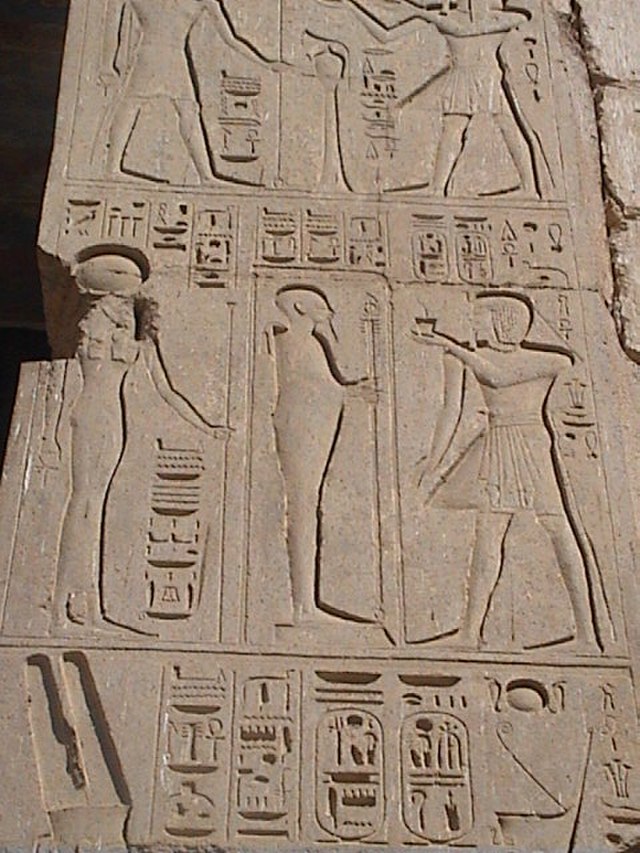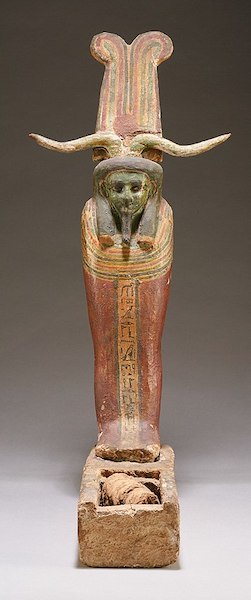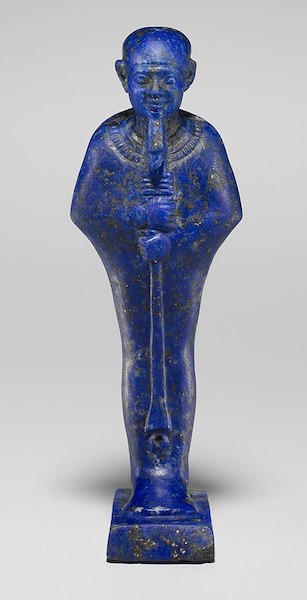
Ptah (Pteh, Peteh) was one of the triad of Memphis along with Sekhmet (or Bast) and Nefertum. When Memphis became the capital of Egypt, Ptah became the ultimate creator who made everything including the gods of the Ogdoad of Hermopolis and the Ennead of Heliopolis and was given the epithet “He who set all the gods in their places and gave all things the breath of life”. Ptah was worshipped throughout all of Egypt, but his primary cult centres were in Memphis and Heliopolis.
He was so popular in Egypt that it is said that the name “Egypt” itself derives from a Greek spelling of the name of a temple in Memphis; “Hwt-kA-ptH”, which means “the temple of the Ka of Ptah”.


Ptah is often described as an abstract form of the “Self-Created One”, who made the universe either by the wish of his heart (sometimes associated with Hathor or Horus) and by his tongue (or speech, identified with Thoth and Tefnut). Alternatively, you could argue that he was more directly in control of creation than either Ra or Atum).
He was the patron of sculptors, painters, builders, carpenters, and other craftsmen, and was thought to have invented masonry. In fact, he may have formed the template for the idea of god as the great architect which is so popular in Masonic mythology and some branches of Christian theology, or as the Book of the Dead puts it, “a master architect, and framer of everything in the universe”. However, it is also worthy of note that some versions of the legend stated that Ptah created the heavens and the earth while Khnum fashioned the people and animals on his potter’s wheel, although it is still implied that Ptah created Khnum.
He was also a god of rebirth who was sometimes credited with creating the Opening of the Mouth ceremony which restored life to the deceased (although it is also associated with Anubis and Wepwawet). He was also the patron of the second month of the Egyptian calendar, called Paopi by the Greeks.

Ptah was a great protector of Egypt. According to myth, he saved the town of Pelusium from the Assyrian invaders. He ordered all of the vermin in the fields to chew through the bowstrings and shield handles of the enemy, destroying their weapons and sending them home in a panic.
The Shabaka stone records that Ptah helped settle the fight between Horus and Set by making Set the lord of Upper Egypt while Geb made Horus the lord of Lower Egypt. Thus, he was instrumental in maintaining the duality of Upper and Lower Egypt.
The Apis bull was regarded as the “Ba” (one of the parts of the soul) of Ptah. However, in later times, the Apis was associated with him only while it was living and associated with Osiris after death. Herodotus wrote that the Apis bull was conceived from a bolt of lightning, he was black with a white diamond on his forehead, the image of a vulture on his back, double hairs on his tail, and a scarab mark under his tongue.
In Memphis he was thought to be married to Bast or Sekhmet. However, he was also described as the husband of Wadjet and numerous smaller local deities. He was the father of Nefertum and Maahes (by either Bast or Sekhmet). He also adopted Imhotep (the deified architect of Djoser’s Step Pyramid as his son.
Ptah was linked to Ta-tenen (meaning “risen land) or Tanen (meaning “submerged land”), an earth god connected with the primeval mound from which creation sprang. In this form he was sometimes associated with Nepthys in representing Lower Egypt. He merged with Sokar (a god of the necropolis) as Ptah-Sokar, the personification of the sun during the night. Ptah-Sokar was associated with Osiris as Ptah-Sokar-Osiris. He was also linked to Min, the fertility god.
He was depicted as a mummified man with unbound arms holding a staff incorporating the ankh (representing life), the was (representing power) and the djed (representing stability). Ptah usually stands on a plinth which was also one of the hieroglyphic symbols used to write the name of Ma’at (who represented order or justice) and was the same shape as a tool used by stonemasons and architects to form a straight edge.



When he is depicted as Ptah-Sokar-Osiris (above) he wears a sun disk with twisted rams horns and long plumes or the “atef crown“. Statues of him in this form often included a copy of spells from The Book of the Dead. The origin of Ptah’s name is unclear, but it is often suggested that the correct translation is either “opener” (because of his link with the ceremony of the Opening of the Mouth) or “sculptor” (because he was a god of craftsmen and creation).
Bibliography
- Pinch, Geraldine (2002) Handbook Egyptian Mythology
- Redford Donald B (2002) Ancient Gods Speak
- Watterson, Barbara (1996) Gods of Ancient Egypt
- Wilkinson, Richard H. (2003) The Complete Gods and Goddesses of Ancient Egypt
- Wilkinson, Richard H. (2000) The Complete Temples of Ancient Egypt
Copyright J Hill 2008